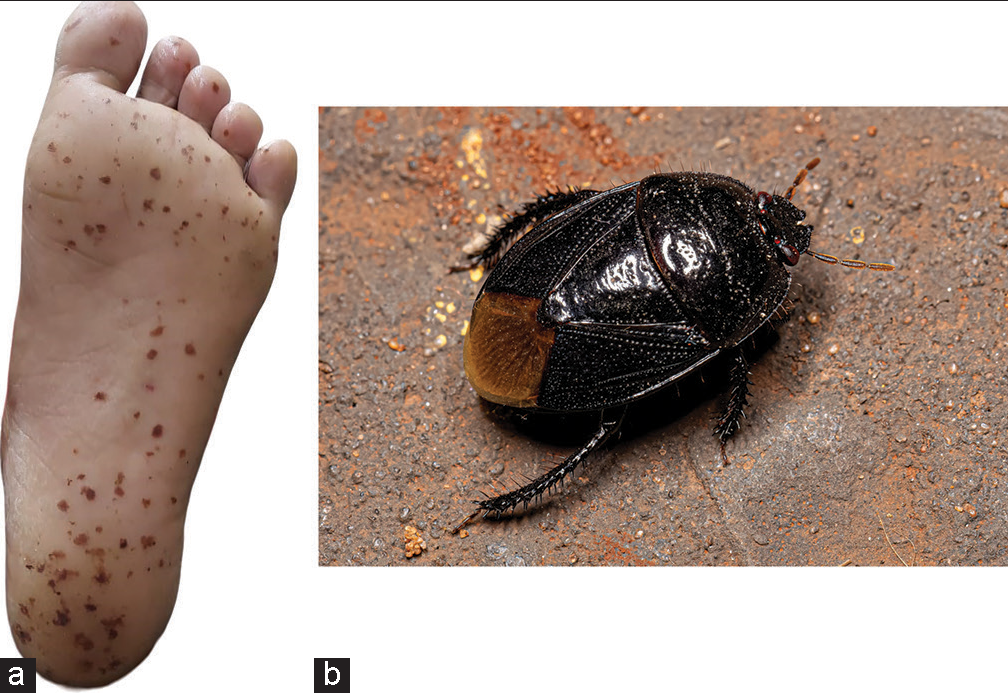Translate this page into:
Burrowing bug (Cydnidae) pigmentation

*Corresponding author: Arun Somasundaram, Department of Dermatology, Jawaharlal Institute of Postgraduate Medical Education and Research, Puducherry, India. arunsomasundaram25@gmail.com
-
Received: ,
Accepted: ,
How to cite this article: Somasundaram A. Burrowing bug (Cydnidae) pigmentation. CosmoDerma 2023;3:142.
A 40-year-old male presented with complaints of sudden onset of asymptomatic skin lesions over the soles for 3 days, which could not be washed off with soap and water. The patient was an agricultural laborer by occupation and worked in fields outside. Cutaneous examination revealed multiple brownish macules of varying sizes over the soles [Figure 1a]. The rest of the cutaneous examination was unremarkable. Diagnosis of Cydnidae pigmentation was made based on the history. The patient was reassured regarding the same. The patient was followed up after a month, and the pigmentation disappeared spontaneously.

- (a) Multiple brownish macules of varying sizes over the sole. (b) Image of the burrowing bug.
Cutaneous pigmentation due to Cydnidae is underreported due to its transient nature. There are very few case reports reported in the literature. Cydnidae (burrow bugs – Chilocoris assmuthi [Figure 1b]) generally live in soil or sand and feed on roots or other underground parts of plants. They produce an odorous substance from special glands found in the thorax for self-defense. Pigmentation occurs due to this secretion rich in hydrocarbonate and when the insect is crushed.[1] Differential diagnosis includes acral lentigines, resolving petechiae, secondary syphilis, tinea nigra, and lentigines-associated syndromes. Dermoscopy would reveal a cluster of numerous bizarre-shaped shiny brown globules, clods, and granules with a superficial stuck-on appearance. Pigmentation fades off within a week spontaneously. The high prevalence of the bug in India, history of outdoor activity, and spontaneous pigmentation are clues to the diagnosis.
Declaration of patient consent
Patient consent is not required as the patient’s identity is not disclosed or compromised.
Conflicts of interest
There are no conflicts of interest.
Use of artificial intelligence (AI)-assisted technology for manuscript preparation
The author confirms that there was no use of artificial intelligence (AI)-assisted technology for assisting in the writing or editing of the manuscript, and no images were manipulated using AI.
Financial support and sponsorship
Nil.
References
- Atypical cases of cydnidae pigmentation: Digging deeper through dermoscope. Indian J Paediatr Dermatol. 2021;22:356-9.
- [CrossRef] [Google Scholar]





